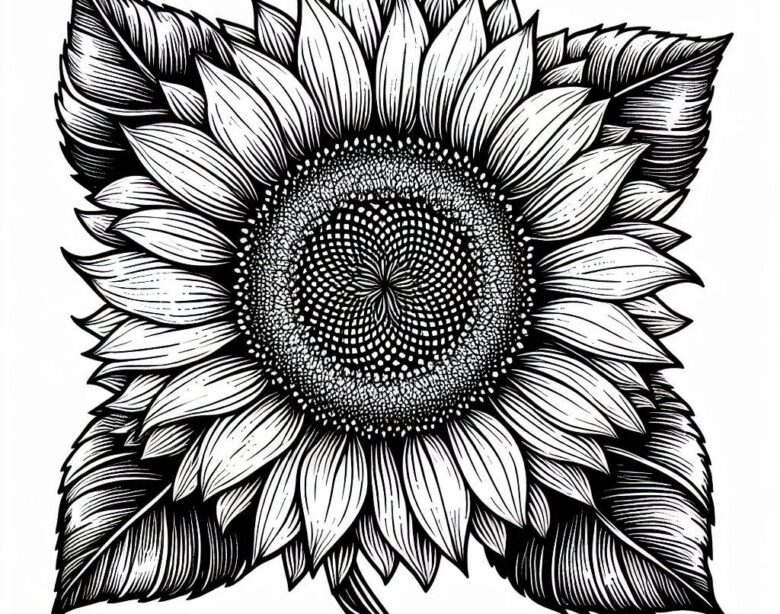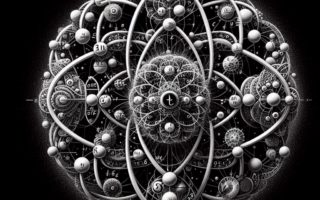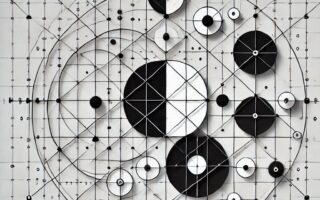The History of the Golden Ratio and Its Impact on Mathematics and Science
The Golden Ratio, often represented by the Greek letter ϕ or τ, is one of the most captivating and enigmatic mathematical concepts in history. Defined as a special number approximately equal to 1.6180339887, the Golden Ratio has fascinated mathematicians, artists, architects, and scientists for centuries. Its unique properties and occurrence in nature, art, and design have earned it the title “divine proportion.”
What is the Golden Ratio?
The Golden Ratio arises when a line segment is divided into two parts such that the ratio of the whole segment to the longer part is equal to the ratio of the longer part to the shorter part. Mathematically, if a+b is the total length of the segment, and a and b are the two parts where a>b, the Golden Ratio satisfies the equation: \frac{a + b}{a} = \frac{a}{b} =ϕ
The solution to this equation is ϕ, an irrational number with intriguing properties, such as its relationship to the Fibonacci sequence and its appearance in self-replicating patterns.
The Ancient Origins of the Golden Ratio
Egypt and Mesopotamia
The history of the Golden Ratio may date back to ancient Egypt and Mesopotamia. Some historians suggest that the dimensions of the Great Pyramid of Giza exhibit the Golden Ratio, although this claim is debated. Whether intentional or coincidental, the ratio is close to the proportions observed in the pyramid’s height and base.
Ancient Greece: Pythagoras and Euclid
The first explicit studies of the Golden Ratio are attributed to the Greeks, particularly the Pythagoreans. The Pythagorean school, which revered geometry and mathematics, studied harmonious proportions in music and mathematics, concepts that would later connect to the Golden Ratio.
Euclid formalized the concept in his seminal work, Elements (circa 300 BCE). He described the division of a line into “extreme and mean ratio,” which corresponds to the modern definition of the Golden Ratio. Euclid demonstrated its importance in geometry, particularly in constructing pentagons and the dodecahedron, a Platonic solid.
The Roman and Islamic Eras
During the Roman and Islamic periods, the Golden Ratio’s influence persisted subtly in art and architecture. Islamic mathematicians, including Al-Khwarizmi, further advanced algebra and geometry, laying the groundwork for future exploration of proportions like ϕ.
The Renaissance Revival
The Golden Ratio experienced a resurgence during the Renaissance, an era marked by a renewed interest in mathematics, art, and science. Artists and architects embraced the idea of harmonious proportions, leading to its application in their works.
Leonardo da Vinci
Leonardo da Vinci, one of the most celebrated polymaths, is closely associated with the Golden Ratio. He studied it under the influence of his friend Luca Pacioli, a mathematician and Franciscan friar who wrote De Divina Proportione (1509). This treatise explored the mathematical and artistic significance of the Golden Ratio, featuring illustrations by Leonardo.
Leonardo incorporated the Golden Ratio into his art, most famously in the Vitruvian Man, a drawing that symbolizes the harmony of human proportions, and potentially in The Last Supper and the Mona Lisa. His fascination with ϕ reflected the Renaissance belief in the unity of mathematics and aesthetics.
Architecture
Architects of the Renaissance, inspired by the writings of Vitruvius and later Pacioli, applied the Golden Ratio to their designs. Buildings like St. Peter’s Basilica in Rome and the Parthenon in Athens are often cited as examples of structures embodying ϕ, though historical evidence for deliberate use of the ratio remains debated.
The Golden Ratio in the Modern Era
Mathematics and Fibonacci
In the 13th century, Italian mathematician Leonardo of Pisa, known as Fibonacci, introduced the Fibonacci sequence to Europe in his book Liber Abaci. This sequence, in which each number is the sum of the two preceding ones, has a close relationship with the Golden Ratio. As the Fibonacci numbers increase, the ratio of consecutive terms approaches ϕ. This connection reveals the ratio’s presence in natural growth patterns, such as the arrangement of leaves, flowers, and shells.
19th and 20th Century Mathematics
In the 19th century, mathematicians like Édouard Lucas and Carl Friedrich Gauss explored deeper relationships between the Fibonacci sequence, the Golden Ratio, and number theory. The 20th century saw the Golden Ratio applied to areas like fractals, chaos theory, and the study of self-similarity in complex systems.
Art, Design, and Aesthetics
The Golden Ratio continued to inspire artists and designers in the 20th century. Movements like Cubism, led by Pablo Picasso and Georges Braque, and modernist architects like Le Corbusier incorporated ϕ into their works, emphasizing the balance between functionality and beauty.
The Golden Ratio in Nature and Science
Biology
The Golden Ratio is often observed in biological systems, such as:
- Phyllotaxis: The arrangement of leaves, seeds, and petals in plants often follows the Fibonacci sequence and approximates ϕ, optimizing light capture and packing efficiency.
- Animal Proportions: Certain proportions in animals, such as the spirals of shells (e.g., the nautilus), exhibit patterns linked to the Golden Ratio.
- Human Anatomy: Some studies claim that human body proportions approximate ϕ, though these findings are often exaggerated.
Physics and Cosmology
In physics, the Golden Ratio appears in phenomena like spiral galaxies and the distribution of matter in the universe. The structure of DNA molecules, with a helical shape and proportions related to ϕ, further highlights its fundamental role in nature.
Technology and Engineering
Modern applications of the Golden Ratio include:
- Design and User Interfaces: The ratio is used in graphic design, web interfaces, and product layouts to achieve visually pleasing arrangements.
- Optimization Problems: The ratio appears in algorithms and optimization problems, such as the construction of efficient grids and networks.
Criticism and Misuse
The Golden Ratio has achieved almost mythical status, leading to its overuse and misapplication. While ϕ undeniably plays a significant role in mathematics and science, its presence in art, architecture, and nature is sometimes exaggerated. Critics caution against attributing too much significance to ϕ without rigorous evidence.
Legacy and Impact
The Golden Ratio remains one of the most intriguing and versatile mathematical concepts. Its legacy is evident in its ability to bridge diverse fields, from pure mathematics to biology, art, and cosmology. The ratio embodies the human quest for beauty, harmony, and understanding, symbolizing the deep connections between mathematics and the natural world.
In Mathematics
The Golden Ratio continues to inspire research in geometry, number theory, and algebra, serving as a foundation for exploring infinity, self-similarity, and complex patterns.
In Science
Scientists use the Golden Ratio to model natural phenomena, investigate fractals, and study the structure of DNA and the universe.
In Popular Culture
The Golden Ratio’s allure persists in popular culture, symbolizing elegance, balance, and mystery. Its appearances in movies, books, and logos perpetuate its cultural significance.
Conclusion
The Golden Ratio, with its rich history and profound impact, exemplifies the timeless interplay between mathematics, science, and art. From ancient Greek geometry to modern scientific discoveries, ϕ has inspired countless breakthroughs and remains a testament to humanity’s enduring fascination with the patterns that govern our world. Whether as a tool for understanding nature or as a symbol of beauty and harmony, the Golden Ratio continues to captivate our imagination and shape the trajectory of knowledge.
Please Visit Our Sponsors:
We only support vendors that we use ourselves in our home. The links below are our own links or affiliate links but know that we use all of these now, or have in the past. As the author/creator of this blog, I also tutor mathematics on Wyzant, sell on Etsy, create content on TpT, and learn Korean on Rosetta Stone.





